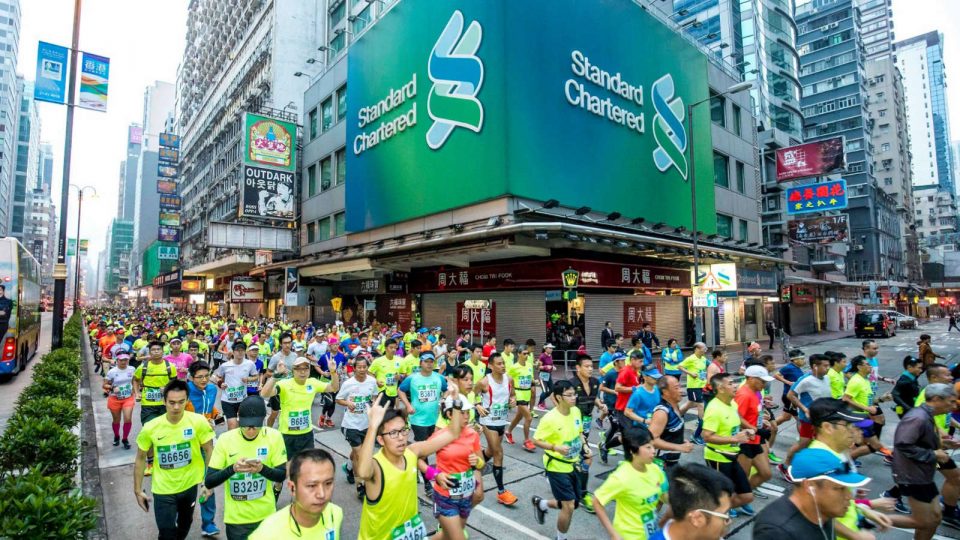Last February, I stood along Nathan Road cheering a group of friends who had entered the Standard Chartered Hong Kong Marathon (SCHKM). I had wanted to take part but alas, was already committed to another longer race; that meant, I had to forego this race.
In early September, when ballot registrations opened, I thought I should at least put my name in the draw. Fortunately, Hong Kong Tourism Board had a collaboration with Train Live Compete – a Singapore-based training provider – for a guaranteed entry scheme, and it was thus a no-brainer for me to duly sign up.
I enjoy running, especially of marathon distances and longer; and I love being overseas while at that too. For the record, I am a slow runner but the different marathon courses always give positive energy to endure the distance. When asked what’s the motivation to complete the same distance every time, I would give the analogy of playing golf; it is always 18 holes per game but each course provides its own challenges and satisfaction at the end of the game.
As I sat on the plane reminiscing my first overseas marathon, I realised that it has been exactly 10 years that I did Tokyo marathon in the almost freezing condition; that race set the poison for many more overseas runs to come. Back then, the local marathon community was still not fully mainstream and running overseas was still way in its infancy.
Today, running overseas is popularly coined as runcations and from a business point of view, the demand trend is having a boom. Hong Kong is a choice destination because there are so many flights to Hong Kong, it’s affordable, can be done over a weekend and is a food heaven.
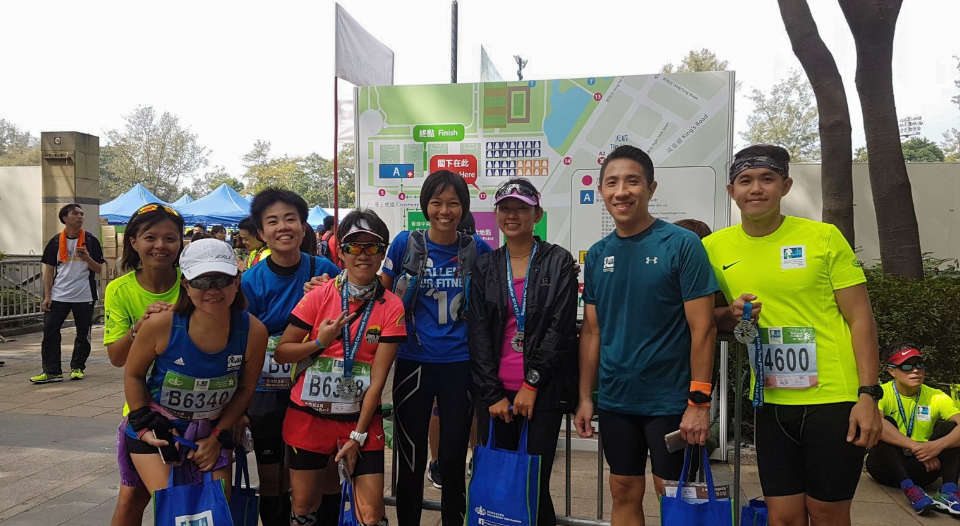
Preparations
Last December, I did back to back weekend marathons: Standard Chartered Singapore Marathon (SCSM) and Phukethon in the Thai southern island. Those two runs capped a long season of overseas marathons including in Chom Bueng (two hours south of Bangkok), Sydney and a 100km trail event in Chiangmai.
So, I was reasonably fit for a while. And then it was my self-declared offseason, especially with year-end holidays and festive food indulgence, and everything went downhill in terms of race preparations. Some words of advice if you are racing very early in the year, stick to your training routine and diet regime religiously; the demons are typically more tempting at year ends.
Also, racing overseas requires runners to adapt to local conditions. As temperature, elevation, humidity and wind conditions may vary widely from what you are used to training in Singapore, it is imperative that you adapt your nutrition, hydration and running gear accordingly.
Race pack collection for the 3 days leading to the race for overseas runners was a simple affair; it was functional but had no frills of the full expo that took place a week earlier mainly for local runners.
In efficient Hong Kong, traffic flowed normally on Saturday on Nathan Road (think Orchard Road). No hints of barricades or stages in the area to indicate that there would be tens of thousands of runners that will pound this busy road on the following day.
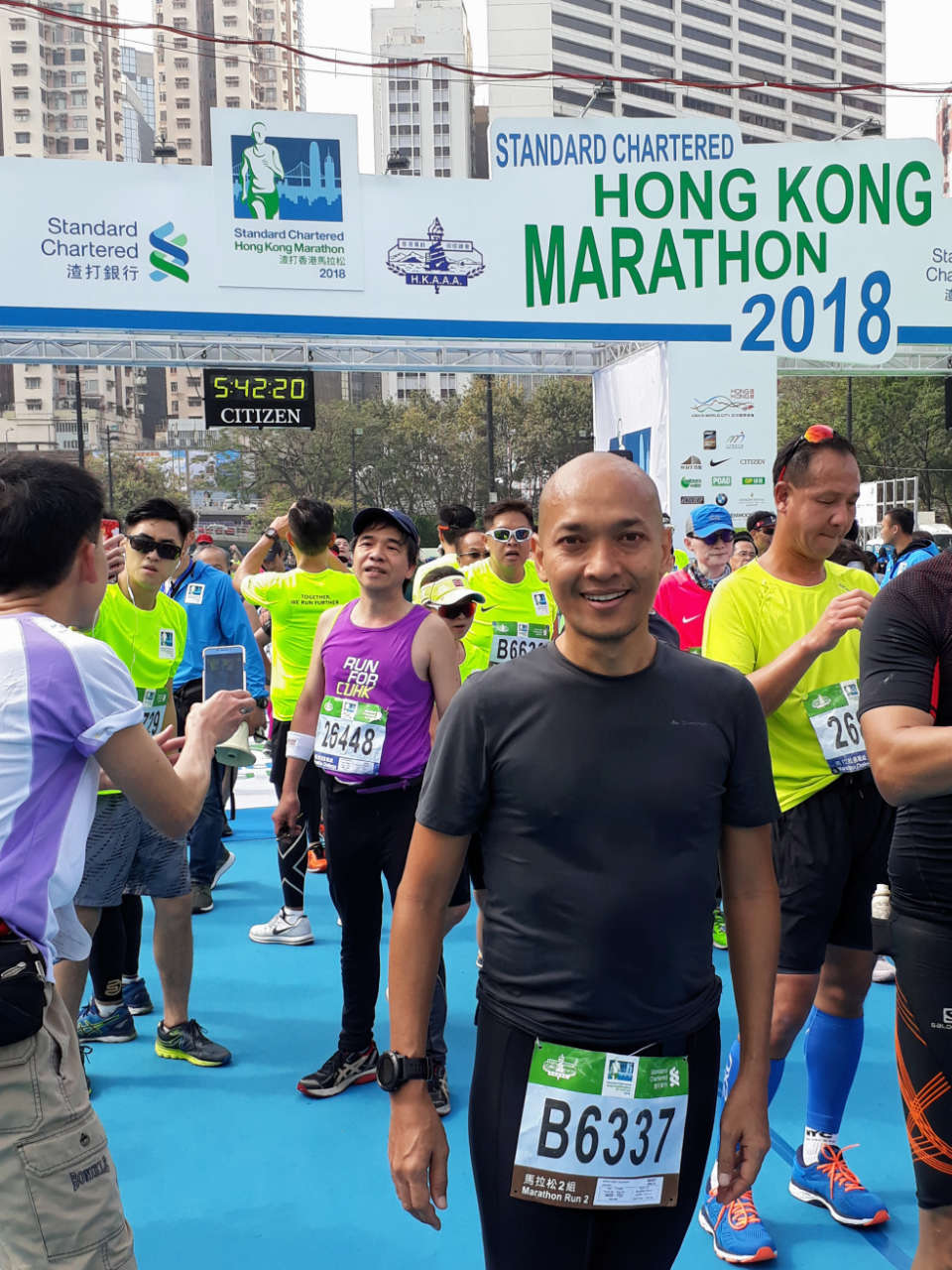
On race Sunday, the temperature hovered around 17 degree Celsius with humidity at about 85% – indeed a favourable condition to run. But the wind was averaging at 17km/h, and that meant a strong breeze in the early morning conditions.
The full marathon was divided into 3 start times, with the first for elites starting at 6:00 a.m., the next one at 6:30 a.m. and I was in the last pen that started at 7:00 a.m. This start time worked ideally for me as I got up at 5:00 a.m. to have my breakfast and get ready for the race. If you have been running locally or within South East Asia region, the race would typically start around 4:30 a.m., and this means that you would have to wake up at an ungodly hour to get prepared, and it disrupts your bio clock.
This IAAF gold label SCHKM has a cut off time of 6 hours; this is also an important point in view of more marathons lately having cut off at 8 or 9 hours. While it is understandable that organisers want to cater to the masses, it also means that the quality of runners is not sub-par.
In last year’s SCSM, I saw participants started to stroll as early as the 5km mark; none of that was seen at SCHKM as runners were motivated to meet the 6-hour cut off time.
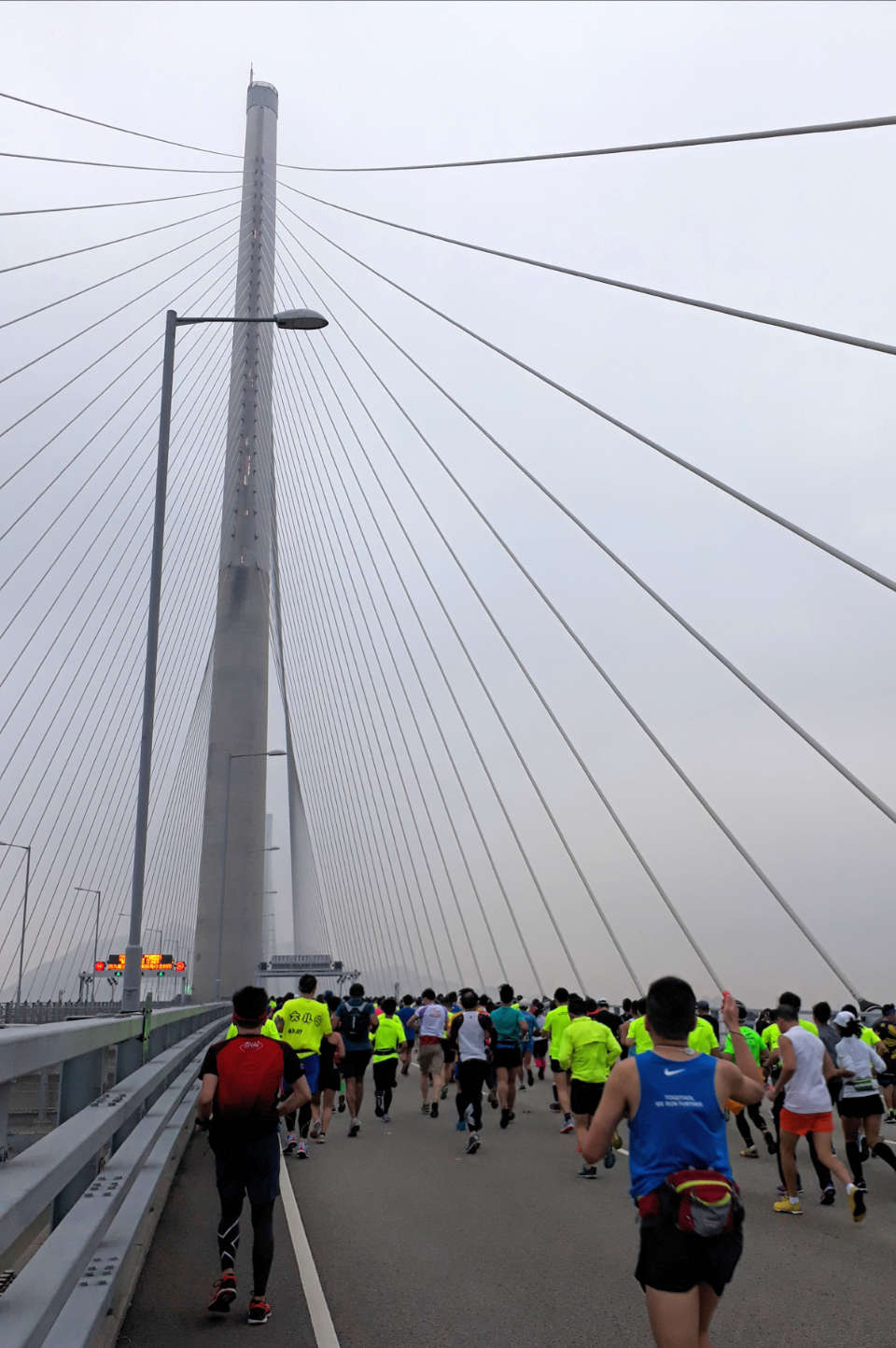
Of bridges, tunnels and highways
The course started at Nathan Road and ended at Victoria Park, Causeway Bay – busy downtowns. About 90% of the course was on the highways, bridges and in the tunnels. I enjoyed the course very much; running on highways meant that the lanes were fairly wide, unlike sharp turns and corners in local marathon races. Bridges are breezy to run on while running in tunnels meant that the race is special enough for the authorities to make it possible for the traffic shutdown.
On the course, marshals, officials and medical assistance were always on sight and assuring. Aid stations consisted of usual electrolytes, water, bananas, and also Twix chocolates!
At the finish point, the usual medal and other goodies were gifted. However, only finisher towels were provided, not finisher tees. If you enjoy running, you would run for the course, not for the tee.
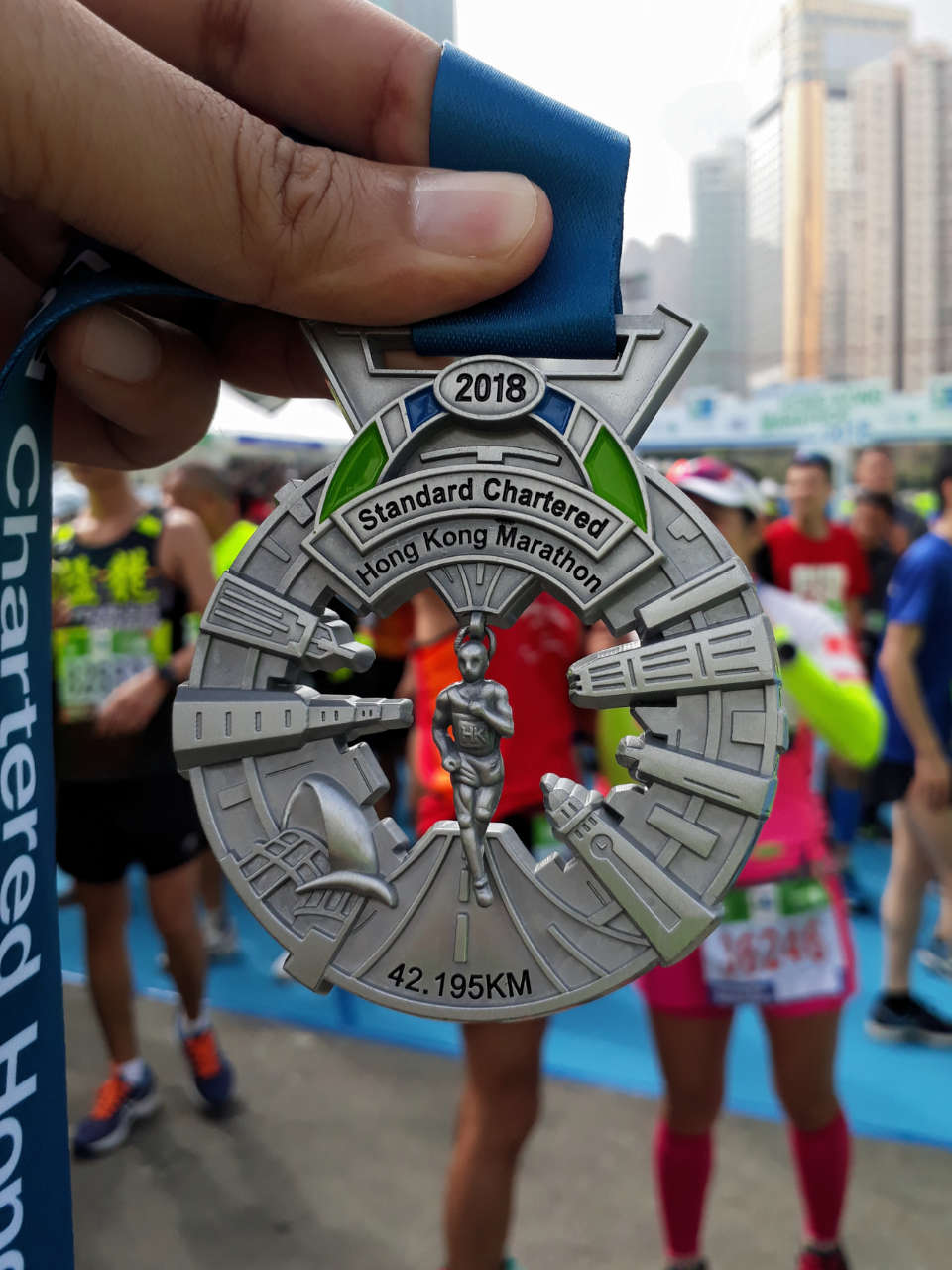
Tips to enjoy Hong Kong Marathon
- Stay near to the start point for a stress-free race morning. Lots of reasonably priced hotels near Tsim Sha Tsui and Jordan MTR stations.
- Flight duration is 4 hours. There are budget airlines galore in addition to the full-fledged ones.
- If you are really tight on time, you can fly in Saturday morning, and leave on Sunday night.
- Be prepared with more than one type of running apparel. Temperature and wind strength vary widely in this period; you would want to have singlets and shorts, or tee and long bottoms at your disposal.
- You may want to check out Hong Kong Tourism Board’s website for the latest happenings in town.
Get Ready for Hong Kong Marathon 2019
The Hong Kong marathon has grown by leaps and bounds since 1997. Its ballot-only registration to cap 74,000 runners is a testament to its stature as a reputable marathon in the region. The Hong Kong Marathon 2019 will take place on 17 February 2019.
By contrast, our local Singapore marathon was founded in 1982 and has seen numbers declining from about 60,000 runners to about 48,000 recently. It takes place annually on the first weekend of December.
By all means, please support our local races. But if you are already thinking of running in this year’s SCMS, and are able to keep your fitness level over the festive season, why not consider the next year’s SCHKM too?



